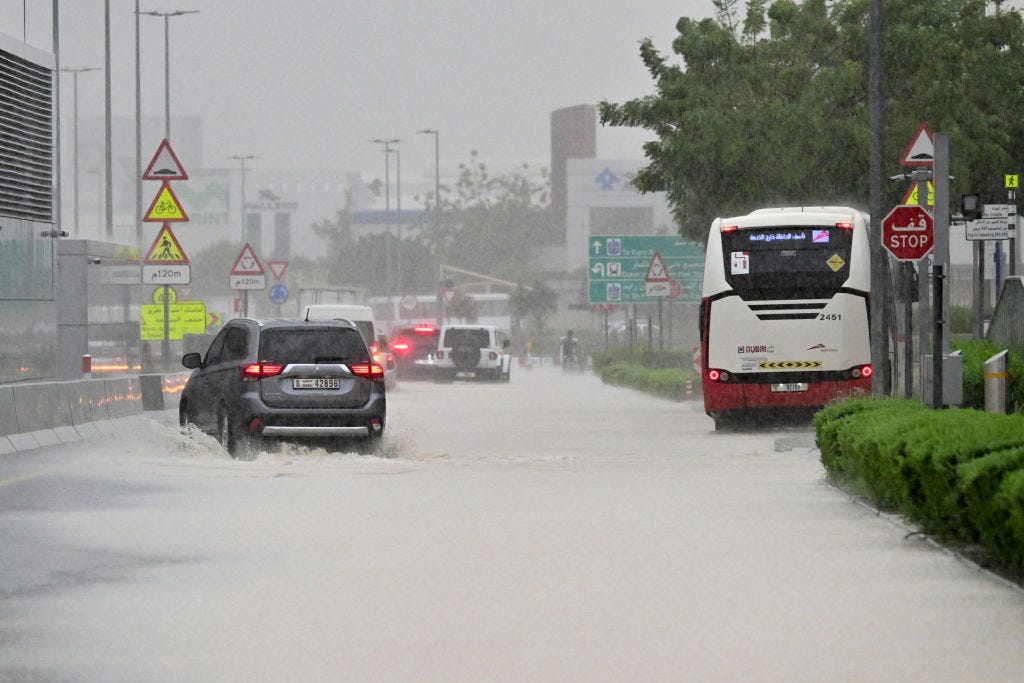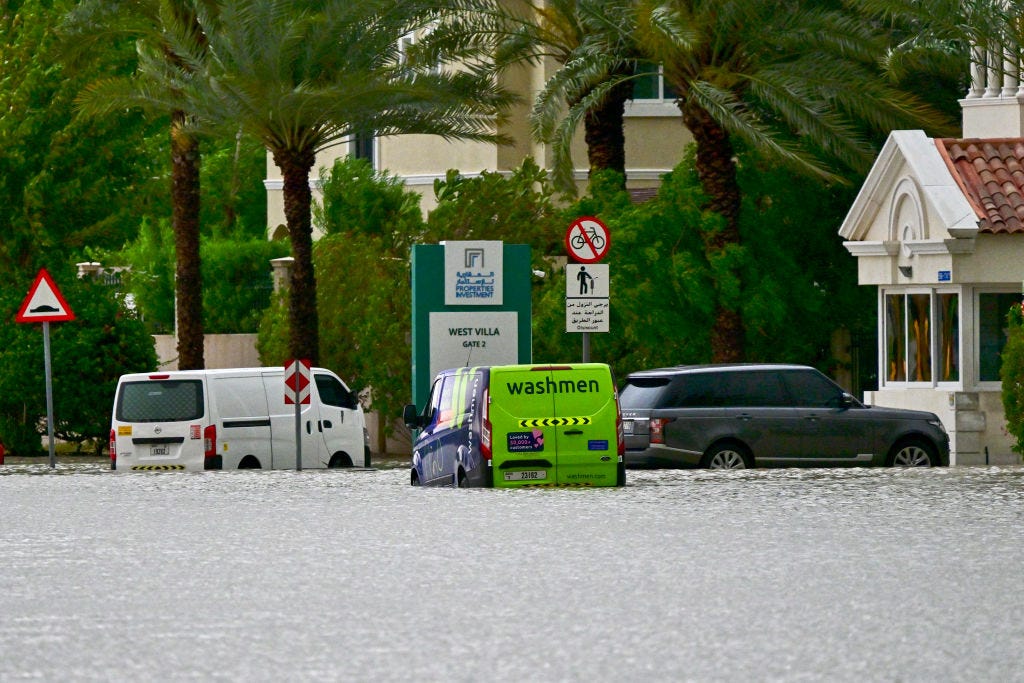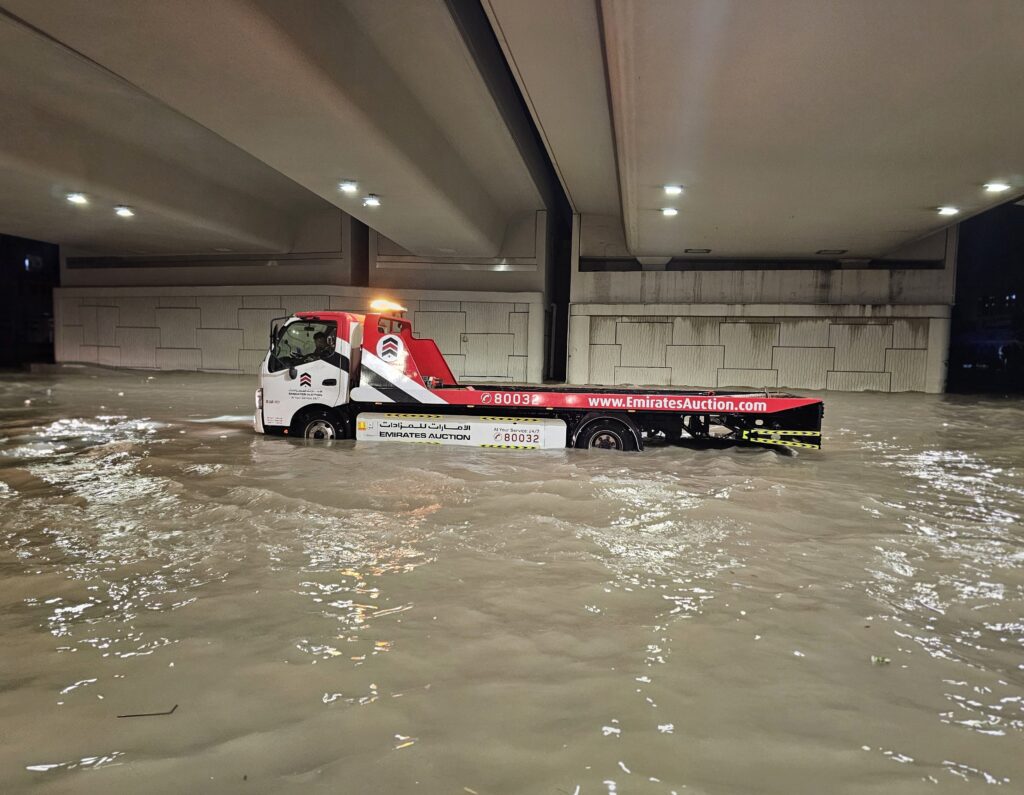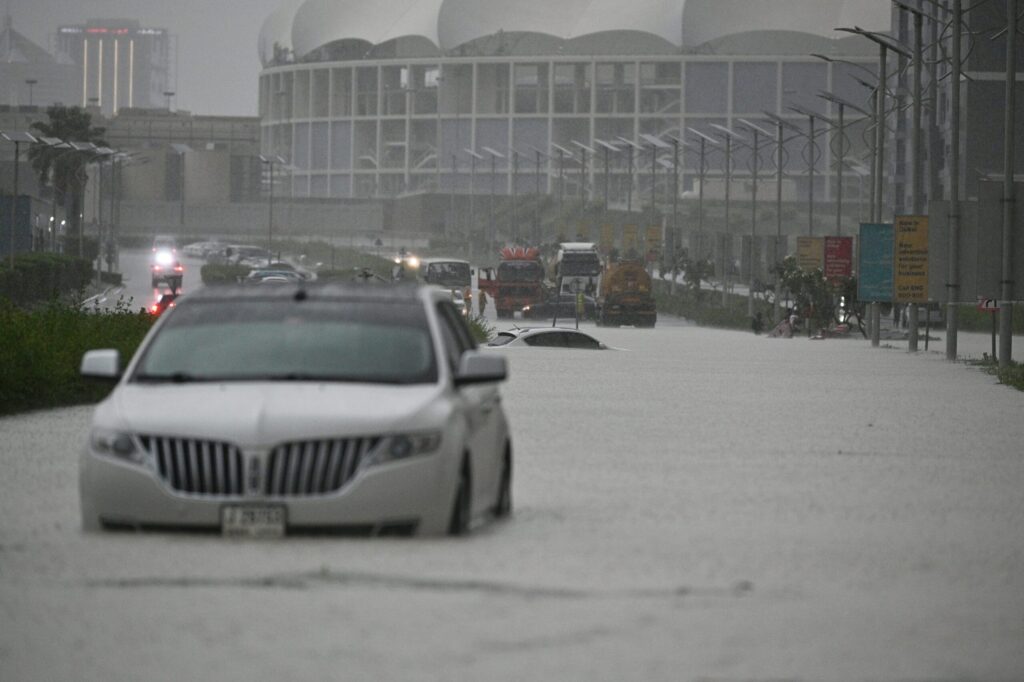- The United Arab Emirates experienced torrential rainfall and severe flash floods on Tuesday.
- The flooding was worsened by to UAE's cloud seeding practice to address water scarcity.
- The weather modification method involves getting clouds to drop more precipitation.
Torrential rainfall pummeled the United Arab Emirates this week, resulting in flash floods that have caused air travel delays, closed schools, and deluged homes.
Dubai International Airport — recently named the most luxurious airport in the world — was diverting planes as of Tuesday evening until the weather conditions improved, according to a statement.
Videos on social media appeared to show a heavily flooded tarmac, with large passenger airplanes taxiing through several feet of water.
The airport did not immediately respond to a request for comment from Business Insider about the videos.

Dubai got over 4 inches of rain by Tuesday evening, around the amount it typically gets in an entire year, CNN reported, citing United Nations data.
The UAE was playing rainmaker by cloud seeding
While images of extreme flooding can show the consequences of the climate crisis, this particular event was worsened by a direct attempt to play rainmaker — literally.
To address water scarcity in the typically dry country, the UAE started using a practice referred to as cloud seeding in the 90s and early 2000s.
Cloud seeding is a method designed to increase the amount of water that falls from a cloud. It involves identifying suitable clouds and then using aircraft or ground-based generators to introduce a chemical agent that facilitates the production of snowflakes.
Cloud seeding has been used in countries worldwide, including in western US states dealing with drought, like California, Colorado, Nevada, Idaho, and Texas.

The practice has long been controversial, with critics dismissing it as an attempt to "play God" or being potentially harmful to the environment or public health. Scientists have not documented harmful impacts of cloud seeding, and recent studies have suggested that the practice works.
But according to Bloomberg, the UAE's cloud seeding operations contributed directly to the heavy rainfall that fell this week.
Ahmed Habib, a specialist meteorologist at the UAE's National Center of Meteorology, told the outlet that two planes conducted cloud seeding operations on Monday and Tuesday and that seven seeding missions had been carried out in two days.
"For any cloud that's suitable over the UAE you make the operation," Habib told Bloomberg.

Despite warning citizens to remain home during the heavy rain, the UAE government's press office said they were "rains of goodness," as the country has dealt with a rise in heat-related illnesses and deaths that some hope can be alleviated by an increase in rainfall.

